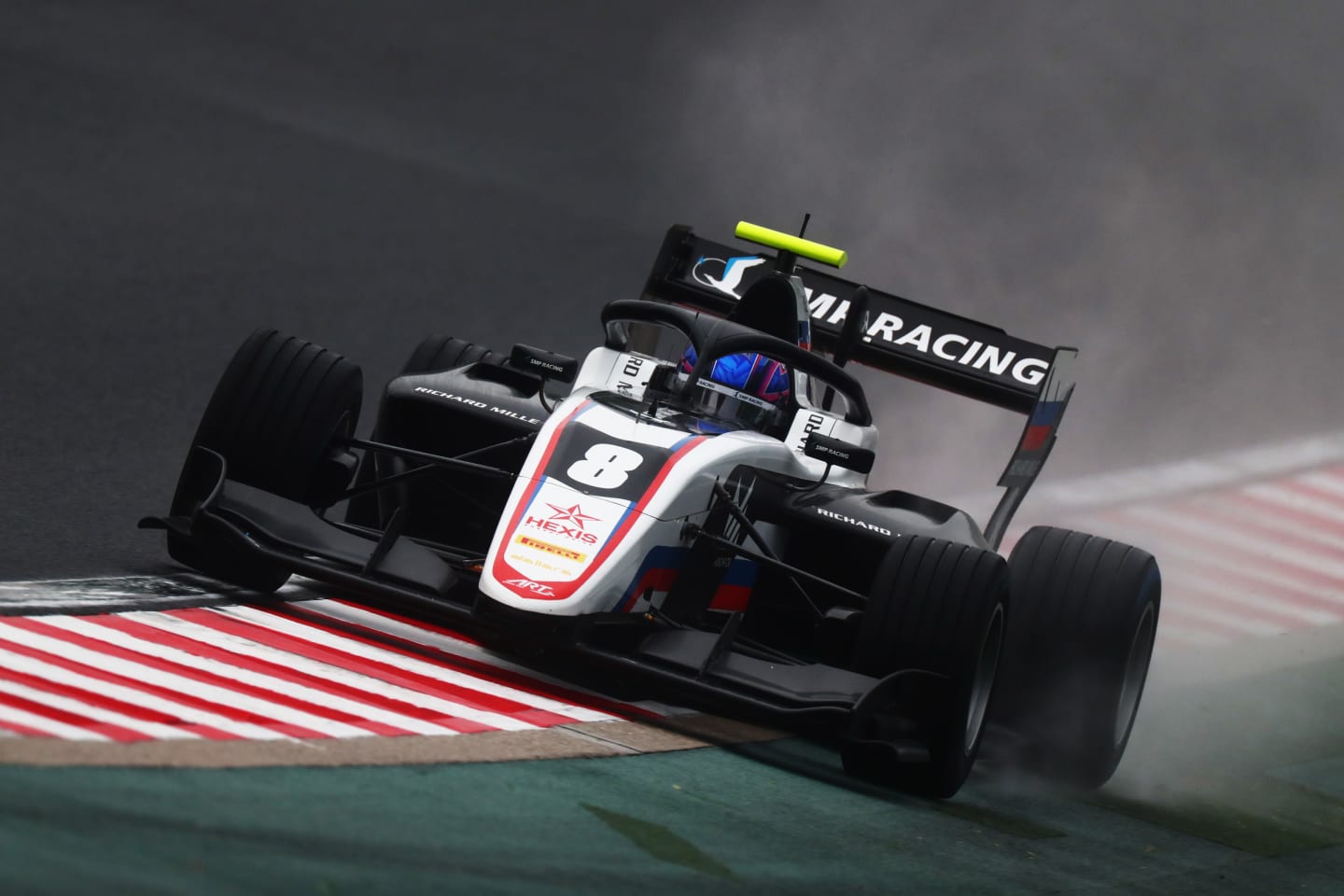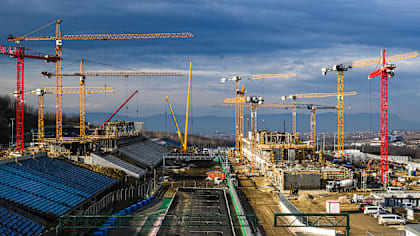
Report
ROAD TO F1: Ilott takes pole in red-flagged F2 qualifying , Smolyar in rain-delayed F3 session
Share

Ferrari junior Callum Ilott gave the perfect demonstration of a wet lap around the Hungaroring to grab his second Formula 2 pole position, while F3 qualifying – delayed until Friday afternoon due to heavy rain – was topped by the equally impressive Alex Smolyar.
UNI-Virtuosi got their strategy spot on, leaving Ilott and his teammate Guanyu Zhou out on track when the rest of the field pitted for fresh rubber.
READ MORE: Two people ‘isolated and removed from operations’ after testing positive for Covid-19
They responded brilliantly to take first and third, but it was Ilott’s lap which impressed the most. The Briton thundered around aggressively to find every last drop of pace from the Hungaroring and fire into P1, 0.3s ahead of Luca Ghiotto.
The field returned to the track to respond, but wouldn’t be given the time to do, as Jehan Daruvala spun into the gravel and brought out a red flag, which ended the session prematurely

Aleksandr Smolyar of ART Grand Prix took pole late on Friday evening for the F3 Feature Race
In F3, Smolyar was similarly impressive in difficult conditions. The ART Grand Prix rookie was almost untouchable in qualifying, maximising the drying sections of the track to find pace that others weren’t able to.
Sebastian Fernandez, Oscar Piastri and Logan Sargeant all held provisional pole at one point, but none of them for very long, as Smolyar continually pushed the limits of the track further and further.
In the end, Sargeant would settle for second below him, with Smolyar’s ART team mate Theo Pourchaire in third, on his first ever appearance at the Hungaroring.
For more on F2, visit the official series website.
Share
YOU MIGHT ALSO LIKE
News Miami Grand Prix introduces One-Day Grandstand tickets for 2025

Video MUST-SEE: How new Ferrari driver Hamilton’s first day at Maranello unfolded
News Hungaroring's redevelopment continues with ‘amazing transformation’ ahead of Hungarian Grand Prix
Report Jarno Opmeer and Bari Broumand take victory in Rounds 2 and 3 of 2025 F1 Sim Racing World Championship



